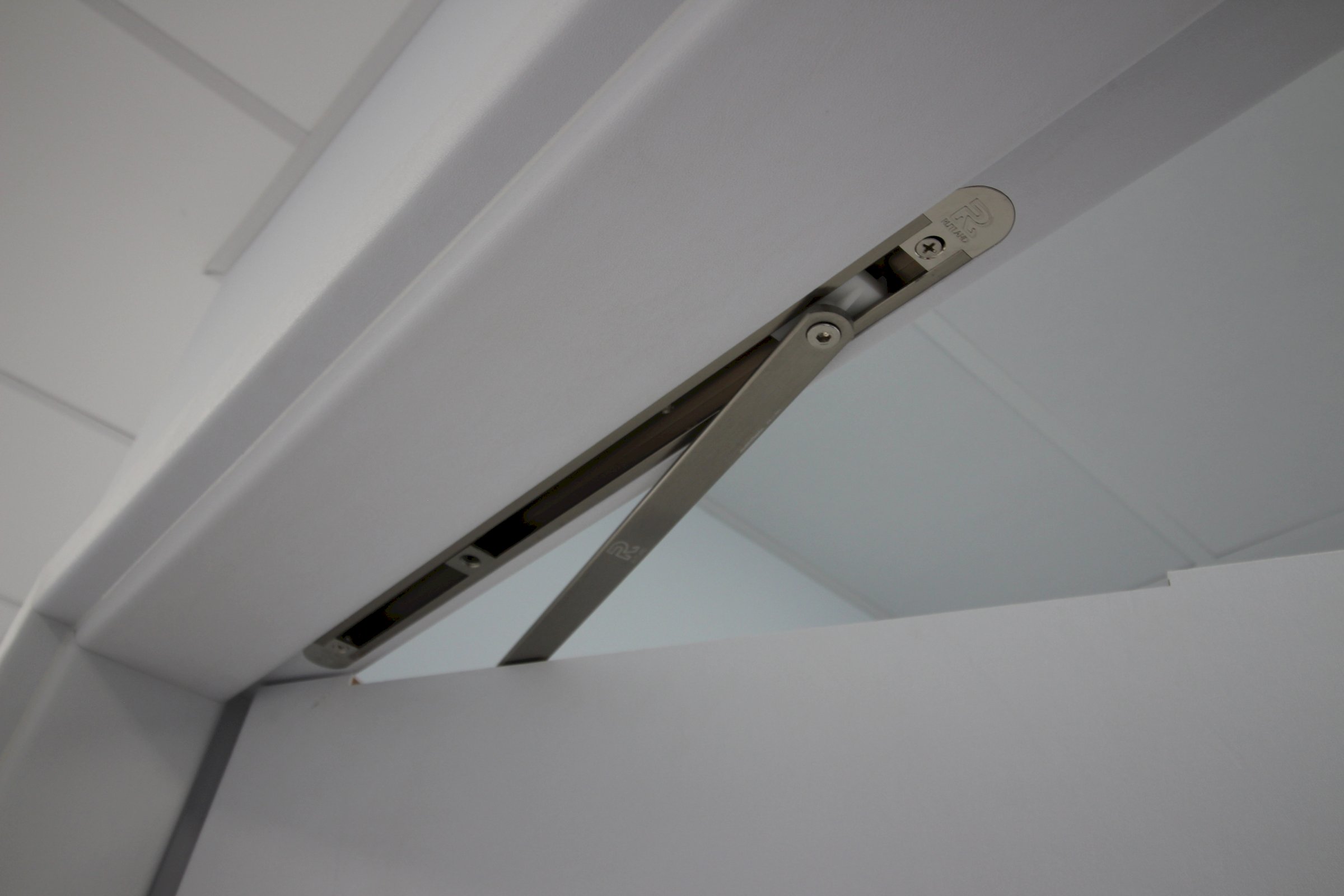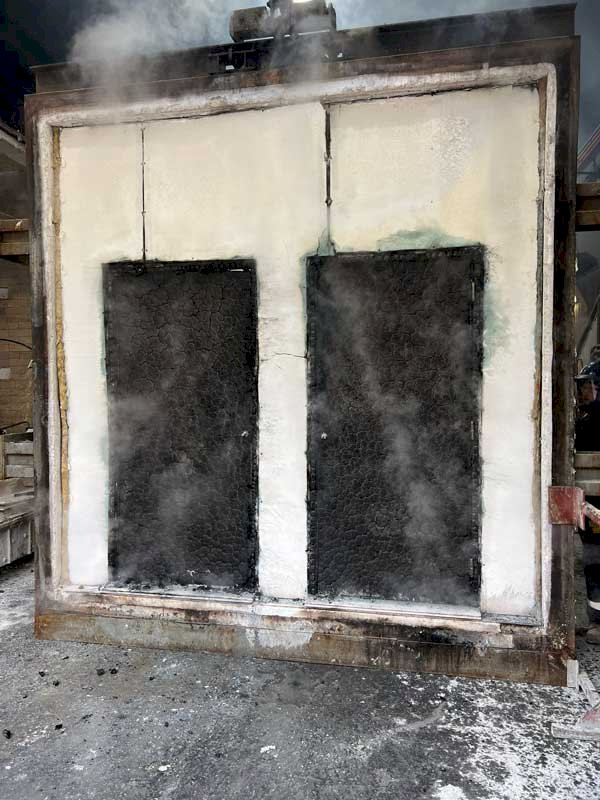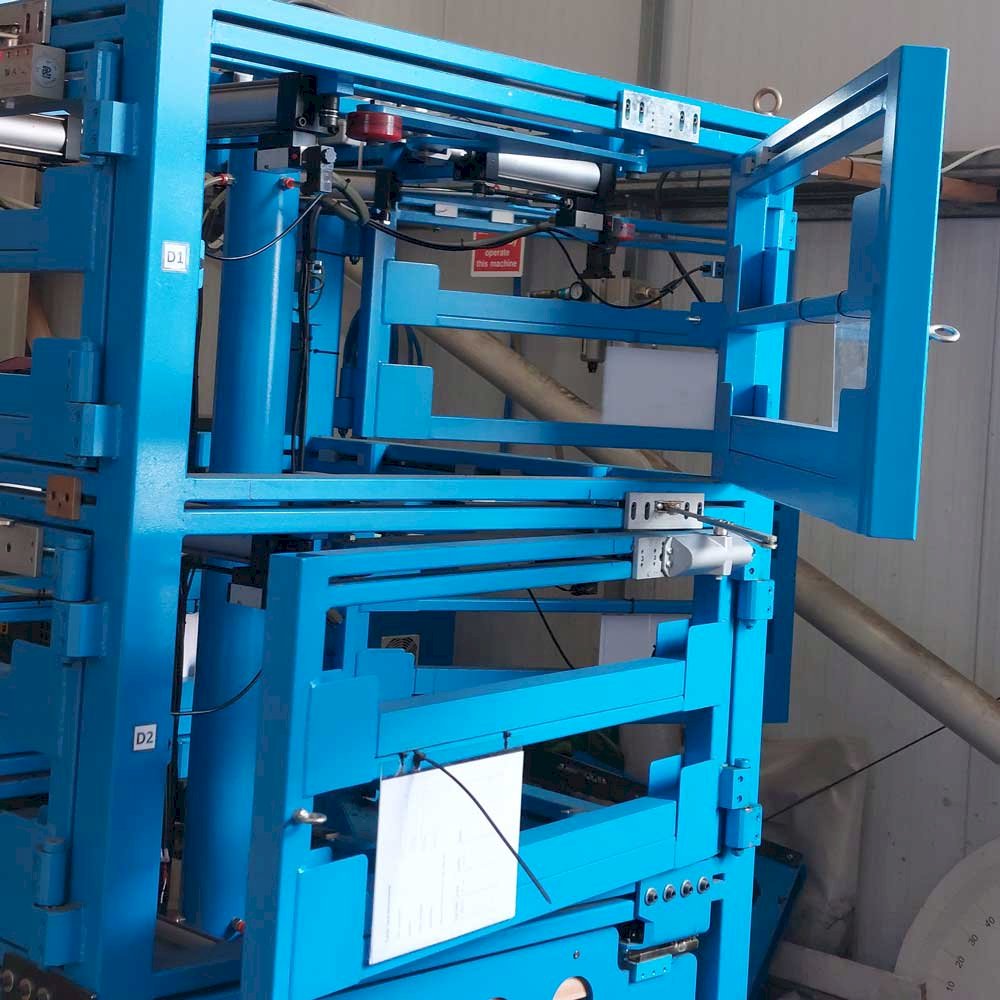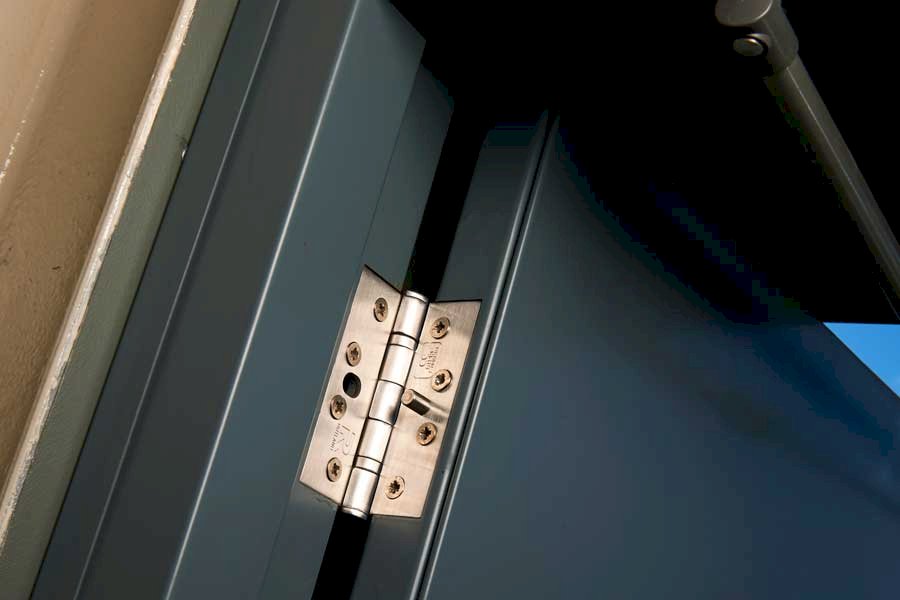
Whilst complete Fire Doorsets have their dedicated standard, their intended use can cross over into other UK and European Standards such as security and weather-resistance.
This article is a summary of key British and European standards relating to Fire and Security doorsets (fire doors). It is not exhaustive, and we encourage you to reach out to the British Standards Institute for specific guidance as to which standards apply to your situation.
Rutland Door Controls firmly believe in the power of working together across the industry to improve life safety in the built environment. Please contact us if we can assist, particularly relating to controlled self-closing devices in fire door design, certification testing, installation, or maintenance.
The ‘golden standard’ for completed fire door assemblies across Europe would be BS EN 1634. BS 476 is a long-standing UK national standard that is still current (as at early 2023). A fire-door that meets these standards will indicate that all component parts are compliant with their own relevant standard, and that the whole doorset has been tested for fire resistance.
So, for architects and fire door specifiers, proof of compliance with one of these standards will usually be as far as they go in terms of choice. Building contractors will need to ensure installation is done correctly and the owner or operator will need to maintain compliance accordingly.
It is important to note that EN1634 is split into two tests; Part 1 deals with heat and flame resistance and part 3 for smoke resistance. A door sample could pass for EN1634-1, yet fail EN1634-3 (or vice versa), so the implications of this need to be considered for high-risk buildings such as care homes and multi-occupancy dwellings.
The test methods involve installing the doorset within an advanced testing furnace to simulate real fire conditions. Fire door manufacturers use an independent, third-party UKAS-accredited test house to prove their product's performance meets the stated standard.

However, whilst BS EN 1634 or BS 476 might be enough for fire-door customers to meed Building Control Approved Doc B, fire-door manufacturers are likely to deal with many other standards that relate to the performance of doorsets and individual components of a fire door, depending on its configuration. For instance, if a fire-rated door is required along an escape route, it is doubling as both a fire-door and emergency exit door so will need a means of egress such as a push-bar-to-open handle. An apartment entrance door will most likely need certification for smoke, security, cyclic, strength, and acoustic performance. Another example of where a fire door might require additional features is a fire-rated door on a server room, which might need a high-security lock plus fire and smoke-rated air vents.
Most developed countries have a national standards body, such as the British Standards Institute (BSI) who works with industry experts to define what characteristics a high-quality product should have and how this should be tested. The national bodies tend to then work with international partners to harmonize standards between, sharing best practices and enabling easier global trade. Pan-national bodies, such as CEN (European Committee for Standardization) often work in turn with the ISO (International Standards Organisation).
Here are some other Standards relating to Fire Doors and their hardware:

image: BS EN 1154 Door Closer test rig
Fire doors only work when closed. Every fire-door must be fitted with a suitable self-closing device that brings the door back to its fully shut position in a controlled manner. Door closers for fire doors use a combination of hydraulics and springs to provide controllable force through the different stages of opening, closing, and latching. Read more about EN1154
BS EN 179 Emergency exit hardware such as manual push pads or levers to unlock a door, are covered by this standard. Whilst emergency exit doors don’t always need to be fire-rated, fire-resisting doors require such hardware when they are on an emergency escape route.
BS EN 1125 Panic exit devices. The difference between emergency exit hardware and panic exit hardware is that the latter is designed to be easier to activate in the event of diminished cognitive ability. An immediate threat in a crowded, unfamiliar venue is known to cause debilitating panic. Push-bar-to-open devices release upon general pressure, without requiring any dexterity.
BS EN 1155 electrically powered electrically powered devices for hold-open or swing-free doors. These are fitted to fire-resisting doors that are normally kept in the open position, and in the event of fire or power cut, allow the door's self-closing device to function. Often used in high footfall and trolley or hospital bed access routes such as corridor fire doors in hospitals, shopping centres, and care-homes. Hold-open and free-swing door-closer devices are important to accessible design, in accordance with BS 8300-2.
BS 8300 Design of accessible and inclusive buildings. Many public buildings come under Approved Doc M where Fire doors should be easy to open and not put those less physically able at a disadvantage. Some high efficiencypower adjustable closersare tested to meet and assist BS8300, with easy opening and combined safe, controlled closure on a range of door sizes.
BS EN 1158 door coordinator devices. Where a double-leaf fire door is installed with rebated meeting stile, it is important that the two leaves shut in the correct order to establish the fire and smoke seal required. This function is usually achieved through a door coordinating device.
BS EN 12209 Mechanically operated locks and locking plates. Where fire-resisting doors require access control/security, the relationship between the door closer device and the lock’s latching mechanism is crucial. Compliance with BS 12209 of the lock indicates the suitability of the locking mechanism for use on fire resistance and/or smoke control doorsets.
BS EN 13637 Electrically controlled exit systems for use on escape routes. This standard covers fire door hardware that is designed to balance security (control of access) with a means of escape.
BS EN 13501-1 tests for how any construction material reacts to fire. EN13501 grades each material into Euroclass ratings. A1 is the highest rated as being non-combustible and non-contributing to the fire, with the lowest F grade being combustible and “easily flammable”.
BS EN 1303 This standard is about the grade of cylinder locks, in addition to security and durability. There are three grades of fire resistance identified by this standard. BS1303 will be of interest to manufacturers of fire and/or smoke control doorsets needing to find cylinder locks suitable for fire doors (that are not on an escape route).
BS EN 15684 A standard for the performance of mechatronic cylinder locks and electronic keys. Where these are to be used on fire-rated doorsets, they are given a grade depending on fire test performance.
BS 8214 Timber-based fire door assemblies covers the chain of supply, installation, and lifecycle of the majority of fire door grades. BS 8214 provides a code of practice for the specification, installation, and maintenance of timber fire doors up to 2 hours fire resistance (FD120). It takes a wide, holistic approach to the fire door as an enduring component of the building’s fire safety fabric. As many professional trades are involved in fire door safety, this standard covers all those not directly making the doorset; component suppliers, sub-contractors, architects, local authorities, plus other Responsible Persons and Duty Holders under the Fire Safety Order. As there is no published equivalent standard (at time of publication) for metal or composite material fire doors, BS 8214 is sometimes referred to informally within these sectors of the fire-door industry.
BS EN 15269 This standard is mainly of interest to fire testing houses. Its focus is on the extended application of test results when assessing assemblies without further testing.
BS EN 1906 Door Hardware and ironmongery such as handles. Only grade 1 fire-rated handles are suitable for use in fire door manufacture under BS 1906. This is indicated by the 4th digit on the door code plate.
ISO 3008-4 Fire resistance tests. Door and shutter assemblies - Linear joint fire seal materials used to seal the gap between a fire door frame and the supporting construction
BS EN 14846 This mainly deals with the security and durability of electromagnetically controlled locking mechanisms but does categorize the suitability or otherwise of use on fire-resisting doors.
BS EN 1935 Single-axis hinge standards. Fire doors should be fitted using CE or UKCA marked hinges covered by this standard. The durability and grade of hinges chosen for fire doors ought to match that of the door-closing device, as together they are the hardware that connects the door to its frame. The durability grade required will take into account the weight of the door, the back-check operation on the closer, and what he door is likely to be subjected to (weather and user).
Whilst doors only make up a fraction of a building's safety and integrity, they are subjected to a lot of wear and tear through frequent opening and closing. Properly closing fire-doors are essential in preventing the rapid spread of smoke and fire through buildings and as such they are legal and moral obligations to get it right. Industry-wide national and international standards enable a consistent and sound way to safely choose, specify, install and maintain safety at every fire-door. Rutland Door Controls make compliant self-closing devices for many fire-door manufacturers, and also provide CPD training and support around the certification of fire-doors.
Leave us your contact details and we will call you back for a free consultation about your requirements.